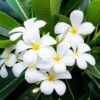**Unique and Rare Species of Porcelain Flowers**

Porcelain flowers, known for their exquisite beauty and intricate details, encompass a diverse array of species, each with its own unique charm and rarity. Exploring these exceptional varieties offers a glimpse into the remarkable diversity of the Hoya genus and the allure of its rare and elusive members.
1. **Hoya Kerrii (Sweetheart Plant)**: Recognized for its heart-shaped leaves, Hoya kerrii is a cherished species prized by collectors for its charming appearance and sentimental symbolism. Native to Southeast Asia, this species is relatively rare in cultivation, making it highly sought after by enthusiasts seeking to add a touch of romance to their botanical collections.
2. **Hoya Dischidia**: Characterized by its unusual foliage and intricate growth habit, Hoya dischidia is a distinctive species prized for its ornamental value and botanical intrigue. With its cascading vines and tiny, urn-shaped leaves, this species adds a touch of whimsy and elegance to hanging baskets and terrariums, making it a favorite among collectors of rare and unusual plants.
3. **Hoya Multiflora**: Renowned for its prolific blooming habit and fragrant flowers, Hoya multiflora is a coveted species prized for its abundance of small, star-shaped blooms that adorn its trailing vines. Native to Southeast Asia, this species is relatively rare in cultivation, making it a prized addition to botanical collections and indoor gardens.
4. **Hoya Australis (Waxvine)**: With its glossy leaves and clusters of fragrant flowers, Hoya australis is a striking species prized for its ornamental value and resilience. Native to Australia and parts of Southeast Asia, this species thrives in a variety of growing conditions and is a popular choice for both indoor and outdoor cultivation.
5. **Hoya Bella**: Known for its dainty foliage and delicate blooms, Hoya bella is a charming species prized for its compact growth habit and ease of care. Native to India and the Himalayas, this species produces clusters of star-shaped flowers with pink centers, adding a touch of elegance and grace to any botanical collection.
6. **Hoya Carnosa ‘Variegata’ (Variegated Wax Plant)**: Celebrated for its striking variegated foliage and fragrant flowers, Hoya carnosa ‘Variegata’ is a coveted cultivar prized for its aesthetic appeal and botanical rarity. With its cream-colored margins and cascading vines, this cultivar adds a touch of color and texture to indoor spaces and botanical displays.
In conclusion, the world of porcelain flowers is replete with unique and rare species that captivate the imagination and inspire botanical enthusiasts around the globe. Whether prized for their charming foliage, prolific blooms, or ornamental value, these exceptional varieties add diversity and intrigue to botanical collections and provide endless opportunities for exploration and discovery.
**Exploring Unique and Rare Species of Porcelain Flowers**
Within the vast array of porcelain flowers, there exists a subset of species that stand out for their exceptional beauty, rarity, and unique characteristics. These rare and distinctive varieties capture the imagination of botanical enthusiasts and collectors, offering glimpses into the extraordinary diversity of the Hoya genus.
1. **Hoya Imperialis (Royal Wax Flower)**: One of the most coveted and elusive species, Hoya imperialis is celebrated for its regal stature and breathtaking blooms. Native to the rainforests of the Philippines, this species boasts large, waxy flowers in shades of pink, red, or purple, with intricate star-shaped patterns adorning their petals. Highly sought after by collectors, Hoya imperialis is a prized addition to any botanical collection.
2. **Hoya Fitchii**: Known for its exquisite fragrance and delicate blooms, Hoya fitchii is a rare species native to the rainforests of Borneo and Malaysia. Its clusters of star-shaped flowers exude a sweet, honey-like scent that attracts pollinators and delights the senses. With its glossy foliage and cascading growth habit, Hoya fitchii adds a touch of elegance and sophistication to indoor gardens and botanical displays.
3. **Hoya Mindorensis**: Endemic to the Philippines, Hoya mindorensis is a unique species valued for its striking flowers and compact growth habit. Its pendulous clusters of blossoms feature intricate pink or red markings, resembling miniature chandeliers suspended from the plant’s trailing vines. Despite its rarity in cultivation, Hoya mindorensis is prized by collectors for its ornamental value and botanical intrigue.
4. **Hoya Lacunosa (Honey Plant)**: Renowned for its fragrant blooms and compact growth habit, Hoya lacunosa is a charming species native to the forests of Southeast Asia. Its small, star-shaped flowers exude a sweet, honey-like scent that attracts pollinators and delights the senses. With its trailing vines and abundant blooms, Hoya lacunosa is a sought-after species among enthusiasts seeking to add a touch of fragrance to their botanical collections.
5. **Hoya Pubicalyx (Wax Flower)**: With its striking foliage and vibrant blooms, Hoya pubicalyx is a popular species prized for its ornamental value and ease of cultivation. Native to the Philippines and surrounding regions, this species produces clusters of star-shaped flowers in shades of pink, red, or purple, with contrasting centers that add visual interest to the blooms. Hoya pubicalyx is a versatile species that thrives in a variety of growing conditions, making it a favorite among beginners and experienced growers alike.
In conclusion, the world of porcelain flowers is teeming with rare and extraordinary species that captivate the imagination and inspire admiration. From the regal beauty of Hoya imperialis to the delicate charm of Hoya fitchii, these unique varieties showcase the remarkable diversity and splendor of the Hoya genus, providing endless opportunities for exploration and discovery in the realm of botanical beauty.

